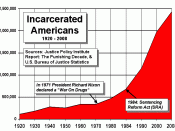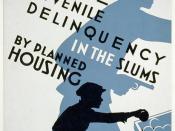Past research has shown major disparities in the juvenile justice system, regarding the involvement with black youth compared to white youth. Questions have been raised about the fundamental fairness and equality of treatment of these youth by the police, courts, and other personnel connected with the juvenile justice system, due to disproportionate racial representation.
There can be confusion in the meanings of terms used describe the racial disparity in the juvenile justice system. This confusion has attributed some racial differences in juvenile justice outcomes to prejudice and bigotry. Therefore, it is important to define the terms being used in this report. Disparity and disproportionate will refer to situations in which minority group members are either under or over represented relative to their proportion in the general population. There is no determined and unanimous judgment about the causes of the disparities. They may stem from differences in actual behavior, or from decision making within the juvenile justice system, including legitimate and extralegal factors.
Concerns about the overrepresentation of minority youth in secure confinement have long been noted, and much research has been devoted to this issue. It is only within the past decade or so, however, that national attention has been directed to the impact of race on juvenile justice decision making concerning confinement. During the Juvenile Justice and Delinquency Prevention Act of 1974, Congress required that Massachusetts, which was participating in the Formula Grants Programs, determine if disproportionate minority confinement exists and, if so, demonstrate efforts to reduce it or risk losing future funding eligibility tied to state compliance (Walker, Spohn & DeLone, 2004).
While compiling information for this paper, I discovered that the state of MA had conducted an experiment in nineteen ninety nine concerning black youth. Although black youth represented approximately fifteen percent of the Massachusetts population between...


